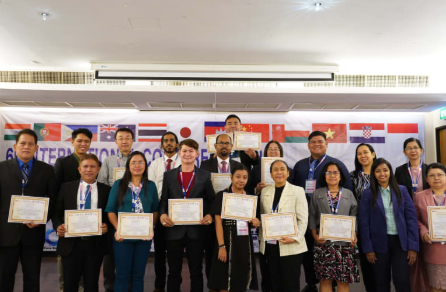This paper delves into the Best conference for Ph.D. students in social science India multifaceted concept of intersectionality within the Indian context, focusing on its impact on representation in academic institutions and public spheres. By examining the overlapping identities of caste, gender, class, religion, and sexuality, the study aims to understand how these intersections influence access, participation, and recognition in India's socio-political landscape. Through case studies, policy analysis, and theoretical frameworks, the paper seeks to highlight the challenges and propose pathways for more inclusive representation.
1. Introduction
Intersectionality, a term coined by Kimberlé Crenshaw in 1989, refers to the interconnected nature of social categorizations such as race, class, and gender, which can lead to complex systems of discrimination and disadvantage. In India, this framework is particularly pertinent due to the country's diverse social fabric, where caste, religion, gender, and other identities intersect, creating unique experiences of marginalization. Understanding these intersections is crucial for addressing systemic inequalities in academic and public domains.
2. Theoretical Framework
The study employs an intersectional lens to analyze representation in Indian academia and public spheres. This approach recognizes that individuals experience oppression in varying configurations and degrees of intensity, shaped by the interplay of multiple identities. By moving beyond single-axis analyses, intersectionality provides a more nuanced understanding of social dynamics and power structures.
3. Intersectionality in Indian Academia
Indian higher education institutions have historically been dominated by upper-caste, male perspectives, often marginalizing voices from Dalit, Adivasi, and other underrepresented communities. Studies indicate that women, especially those from marginalized backgrounds, face significant barriers in academia, including limited access to resources, mentorship, and leadership positions. For instance, research has shown that less than 10% of institutions are led by women, and fewer than 30% hold professor positions.
The experiences of Dalit women academicians highlight the compounded challenges arising from the intersection of caste and gender. These challenges include discrimination, lack of representation in curricula, and limited opportunities for advancement. Addressing these issues requires institutional reforms that promote diversity, equity, and inclusion.
4. Representation in Public Spheres
In the public domain, representation of marginalized communities remains inadequate. Political participation and media representation often reflect the dominance of upper-caste, male narratives, sidelining the voices of women, Dalits, Adivasis, and other marginalized groups. For example, studies have shown that women with intersectional identities, such as Dalit and Madhesi women, have minimal presence in leadership positions across public and private institutions.
Activists like Grace Banu, a Dalit transgender woman, have highlighted the need for recognizing the intersectionality of caste and gender in policy-making and representation. Her advocacy for horizontal reservation for transgender persons based on their caste underscores the importance of addressing multiple layers of marginalization.
5. Policy Analysis
While India has implemented affirmative action policies, such as reservations in education and employment, these measures often fail to account for the complexities of intersectionality. For instance, the categorization of all transgender individuals under the "Other Backward Classes" (OBC) category overlooks the diverse caste backgrounds within the transgender community. This homogenization can perpetuate existing inequalities and hinder the effectiveness of such policies.
To address these shortcomings, policies must be re-evaluated to incorporate intersectional considerations. This includes collecting disaggregated data, engaging with marginalized communities in policy formulation, and implementing targeted interventions that acknowledge the interplay of various identities.
6. Case Studies
-
Sharmila Rege: An Indian sociologist and feminist scholar, Rege's work emphasized the intersection of caste and gender. She advocated for the inclusion of Dalit women's voices in feminist discourse and highlighted the structural violence of caste in academia.
-
Grace Banu: As a Dalit transgender activist, Banu's efforts have brought attention to the compounded discrimination faced by individuals at the intersection of caste and gender identity. Her activism underscores the need for policies that recognize and address these overlapping oppressions.
7. Challenges and Recommendations
Challenges:
-
Lack of Disaggregated Data: The absence of detailed data on intersectional identities hampers the development of targeted policies.
-
Institutional Resistance: Entrenched power structures within academic and public institutions often resist inclusive reforms.
-
Tokenism: Superficial inclusion without genuine empowerment can undermine the objectives of representation.
Recommendations:
-
Inclusive Policy Design: Develop policies that consider the interplay of multiple identities and address specific needs of marginalized groups.
-
Capacity Building: Provide training and resources to institutions to foster inclusive environments.
-
Community Engagement: Involve marginalized communities in decision-making processes to ensure their voices are heard and respected.
8. Conclusion
Intersectionality offers a critical framework for understanding and addressing the complexities of representation in Indian academia and public spheres. By acknowledging and addressing the overlapping identities and systemic barriers faced by marginalized communities, India can move towards a more inclusive and equitable society. This paper underscores the importance of integrating intersectional perspectives into policy-making, institutional reforms, and societal discourse to ensure that all voices are represented and valued.
